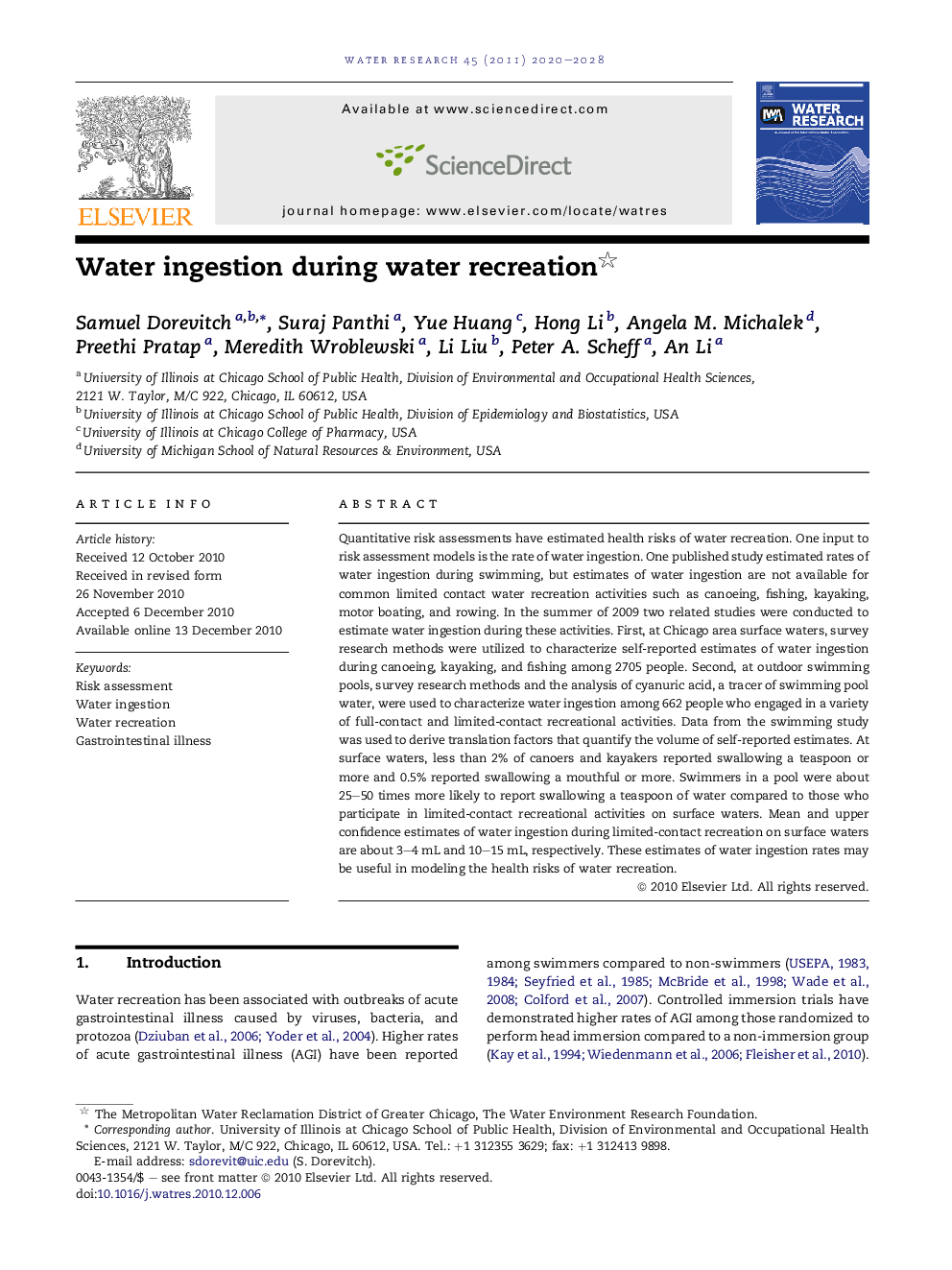| کد مقاله | کد نشریه | سال انتشار | مقاله انگلیسی | نسخه تمام متن |
|---|---|---|---|---|
| 4483216 | 1316881 | 2011 | 9 صفحه PDF | دانلود رایگان |

Quantitative risk assessments have estimated health risks of water recreation. One input to risk assessment models is the rate of water ingestion. One published study estimated rates of water ingestion during swimming, but estimates of water ingestion are not available for common limited contact water recreation activities such as canoeing, fishing, kayaking, motor boating, and rowing. In the summer of 2009 two related studies were conducted to estimate water ingestion during these activities. First, at Chicago area surface waters, survey research methods were utilized to characterize self-reported estimates of water ingestion during canoeing, kayaking, and fishing among 2705 people. Second, at outdoor swimming pools, survey research methods and the analysis of cyanuric acid, a tracer of swimming pool water, were used to characterize water ingestion among 662 people who engaged in a variety of full-contact and limited-contact recreational activities. Data from the swimming study was used to derive translation factors that quantify the volume of self-reported estimates. At surface waters, less than 2% of canoers and kayakers reported swallowing a teaspoon or more and 0.5% reported swallowing a mouthful or more. Swimmers in a pool were about 25–50 times more likely to report swallowing a teaspoon of water compared to those who participate in limited-contact recreational activities on surface waters. Mean and upper confidence estimates of water ingestion during limited-contact recreation on surface waters are about 3–4 mL and 10–15 mL, respectively. These estimates of water ingestion rates may be useful in modeling the health risks of water recreation.
Research highlights
► Less than 2% of limited-contact recreators at surface waters swallow a teaspoon or more of water.
► Swimmers in a pool are 25–50 times more likely to swallow a teaspoon of water compared to limited-contact recreators at a pool.
► Water ingestion during limited-contact recreation is determined in large part by whether or not capsize occurs.
► Mean and upper confidence estimates of water ingestion are about 3–4 mL and 10–12 mL during limited-contact recreation at surface waters.
► Mean and upper confidence estimates of water ingestion are about 10 mL and 35 mL during swimming at a pool.
Journal: Water Research - Volume 45, Issue 5, February 2011, Pages 2020–2028